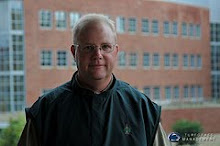Managing Poa annua var. annua (Poa annua) on putting greens has been an increasing challenge for golf course superintendents. As the golfer has continued to demand higher quality and faster greens, managing this species has become part science and part art form. Of all the management issues superintendents face with Poa annua putting greens, one of the most important in my mind has to be the control of annual seedheads. As Poa annua comes out of winter dormancy, the plant goes through the natural process of going to seed. Since annual bluegrass is an annual plant, it naturally makes new seeds in order to promote new off-spring. These seedheads cause the putting green surface to become bumpy and irregular. As a result, golfers complain to course employees about the conditions of the putting surfaces.
As part of an overall management strategy, plant growth regulators (PGR’s) have become an important tool in the management of Poa annua putting greens. Simply defined, PGR’s are chemical substances that control various growth and development processes within plants (Huang, 2007). PGR’s can be divided into two different broad categories: compounds that promote growth and stress tolerances, also known as biostimulants, and those that suppress growth. Our focus will be on PGR’s that suppress the growth and development of plants, in particular Class A, C, and E regulators.
Class A compounds suppress growth by inhibiting gibberellin biosynthesis. Trinexapac-ethyl (Primo) is our best example of this class of PGR. Research has shown that in addition to reducing plant top growth, trinexapac-ethyl improves overall turfgrass quality, canopy density, and stress tolerances (Huang, 2007). Ervin and Zhang (2007) found that frequent applications of trinexapac-ethyl had similar results as applications of seaweed extracts in combination with humic acids in that higher levels of naturally occurring plant cytokinins were found in plant leaf tissues. They theorize that by maintaining healthy plants that show delayed leaf senescence, these plants will remain more efficient at photosynthesis resulting in more production of carbohydrates for use by the plant (Ervin and Zhang, 2007). However, Primo alone has never been found to control annual seedhead production of Poa annua. The use of multiple applications of Primo in combination with ethephon (Proxy) (a Class E regulator that works by releasing ethylene after being absorbed by the plant) has, however, proven to be a fairly successful method of reducing seedheads on Poa annua putting greens with few phytotoxic effects. Application of this combination can cause stem elongation which in turn could result in scalping related injuries (Kaminski, 2009, Penn State University Lecture). Timing of the first application is still critical followed by a second application two to six weeks after the initial application.
Class C compounds are those that suppress cell division within a plant including mefluidide (Embark). Embark has been the standard chemical for controlling seedhead production of annual bluegrass on putting greens for many years. Able to achieve seedhead control of nearly 100%, Embark has proven itself effective. In order for the product to be most effective, the optimum timing of the spray must occur just before the seedhead emerges from the plant. This product does come with several potential side effects. I have observed that spraying this product too early in the season could result in the yellowing or browning of the turfgrass if the spray is followed by extremely cold weather or frost. Also, spraying too late in the season could result in poor suppression of seedheads.
Superintendents must determine which product or combination of products best fits into their maintenance plan for their course. They must monitor the weather and the many microclimates on the golf course in order to develop a comprehensive management plan that includes both chemical and cultural practices for the control of annual bluegrass seedheads as well as the overall plant health of the Poa annua putting greens on their course.
It is worth noting that no matter which product or combination of products is used to control this annual problem, label rates should always be used. Increasing or decreasing label rates could have adverse effects on the quality of the putting greens. A successful seedhead management program begins with knowing the products on the market and how they work, knowing the amount of annual bluegrass species you have on your golf course, and understanding your clientele and their expectations.
It is worth noting that no matter which product or combination of products is used to control this annual problem, label rates should always be used. Increasing or decreasing label rates could have adverse effects on the quality of the putting greens. A successful seedhead management program begins with knowing the products on the market and how they work, knowing the amount of annual bluegrass species you have on your golf course, and understanding your clientele and their expectations.
 Founded in 1955 by a small group of individuals, the original intent of the organization was to promote research in the turfgrass industry. Over time, however, the mission of the organization has evolved to include the funding of educational programs through scholarships to those undergraduate and graduate students pursuing an education in turfgrass science, the promotion of the entire turfgrass industry within the state, as well as the sponsorship of various educational and trade show conferences within Pennsylvania.
Founded in 1955 by a small group of individuals, the original intent of the organization was to promote research in the turfgrass industry. Over time, however, the mission of the organization has evolved to include the funding of educational programs through scholarships to those undergraduate and graduate students pursuing an education in turfgrass science, the promotion of the entire turfgrass industry within the state, as well as the sponsorship of various educational and trade show conferences within Pennsylvania. 







